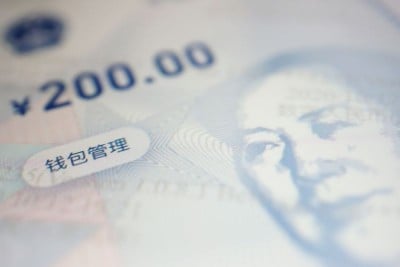An asset is anything with monetary value that a person, company, or state owns or regulates with the prediction of achieving a future benefit.
Assets are acquired or produced to raise a company's value or increase the actions of the company. Whether manufacturing gear or a patent, assets can increase cash flow, lower expenses, or upsurge sales in the future.
Asset Examples

Home, land, financial investments, artwork, jewelry, silver, gold, and your bank account are examples of personal assets. Automobiles, structures, machinery, equipment, money, and accounts receivable are a few examples of the assets that businesses may have.
Why does Asset Matter
Your assets are considered when calculating your price tag or net worth. Your net worth should rise over time. You can use this indicator (assets) to track your advancement toward achieving financial objectives like saving for retirement or buying a home.
The following situations require knowledge of your asset's value:
Net worth: Your net worth influences the state of your finances. You can determine your net worth by deducting your obligations (what you owe or liabilities) from your assets.
Applications for loans: When you apply for a home equity loan, vehicle loan, or mortgage, lenders frequently consider liquid assets. If you have money set aside to make loan payments immediately, you might be eligible for better terms or lower rates if you lose your work.
Collateral: To get a loan from some lenders, you may need to pledge your home or vehicle as security. These things could be confiscated if you don't repay the loan to help with the costs.
Divorce: During a divorce, you and your ex-spouse may decide how to distribute your assets.
Bankruptcy: If you file for bankruptcy, you may have to part with some possessions, such as jewelry or a car.
Retirement: When you're retiring, having a stash of assets is essential. When your paycheck stops coming in, it's best to have cash on hand to cover living expenses. When transforming your assets to cash, remember to consider taxes.
Types of Assets

Assets are often categorized for businesses according to their physical existence, convertibility, and use.
- Current and Fixed Assets: Convertibility
The term "convertibility" describes how quickly assets may be converted into money.
Commodities currently in cash or anticipated to become cash within one year are current assets. Current assets examples include inventory, cash, and accounts receivable for a company.
Fixed assets refer to tangible physical assets that a company purchases to run its operations and have a lifespan longer than one year. Some examples are land, structures, vehicles, aircraft, boats, computer hardware, tools, machinery, mobile phones, and other items.
- Tangible and Intangible Assets: Physical Existence
When considering an asset's physical presence, it is common to divide it into tangible and intangible categories.
Tangible assets are material things. They often consist of money, investments, real estate, structures, stock, vehicles, boats, and other goods.
Intangible assets don't have physical counterparts. They could include trade names, distribution systems, patents, secret techniques, and copyrights.
The majority of the time, tangible assets include current and fixed assets. Although they do not appear on balance sheets, intangible assets may account for a sizable portion of a company's asset value, depending on the nature of the business.
- Operating and Non-Operating Assets: Usage
Assets are typically divided into operational and non-operating categories when classed according to their use.
Operating assets include items like cash, shares, machinery, buildings, equipment, patents, and copyrights necessary for a business to run daily.
Although they could bring in money, non-operating assets are unnecessary for a company to function. They include undeveloped land, vacant buildings, short-term investments, and interest income.
How to determine the value of your assets
There are several methods for determining asset value. According to Rajo-Miller, the three most popular approaches are:
- The cost approach.
- The discounted cash-flow approach.
- The comparable/relative value approach.
The current value of an asset is determined using the discounted cash flow method by using anticipated future cash flows.
Value is determined using the cost of the asset or similar assets, the cost of any enhancements made to the asset, less amortization, or the value lost as the asset ages or is used. Real estate is the main application for this approach of appraisal.
The comparable/relative valuation approach determines an asset's worth by contrasting it with counterparts in the same industry or similar assets. To decide whether you should purchase a stock, you may evaluate its P/E ratio to that of other comparable equities in the same industry. This approach of valuation is mainly applied to company assessments.
Asset Diversification and Allocation
Investment involves risk. The degree of risk associated with different assets varies. But the potential payoff rises as the risk does. Investors buy various assets to diversify their holdings and reduce risk while still encouraging profit.
Asset diversification is a method of risk mitigation. A diverse portfolio comprises stocks from various companies in various areas as opposed to purchasing only one company. The risk is distributed in this way to prevent an investor's portfolio from being significantly impacted by one stock's bad or stagnant performance.
Asset allocation is a tool to guarantee that an investment portfolio includes a diverse range of asset classes. It describes the proportion of each asset class in an investor's portfolio. The risk level an investor is willing to face and the amount of time they have to attain their financial objectives are two essential criteria that affect asset allocation.






